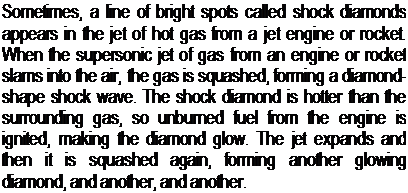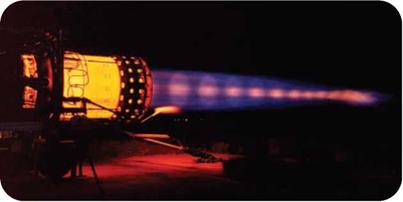. Shock Wave
|
A |
shock wave in air is a sudden, huge rise in air pressure. Shock waves affect the flight of highspeed aircraft and spacecraft through the atmosphere.
Everyone who has heard thunder has experienced the effect of shock waves. A flash of lightning instantly heats the air to as much as 60,000°F (33,320°C). When air is heated, it expands. When it is heated to such a high temperature so quickly, air expands explosively and forms a shock wave. The shock wave rushes away from the lightning faster than the speed of sound. Within a few feet, it has slowed down and become an ordinary sound wave, which we hear as
thunder. Similarly, the sharp crack of a whip is produced when the tip of the whip goes faster than the speed of sound and sets off a shock wave.
Aircraft
When an aircraft flies through the air, it pushes the air in front of it out of its way, which causes disturbances in the air. Pressure waves travel away in all directions. The fastest they can move is the speed of sound. When the aircraft goes faster than the speed of sound, the pressure waves ahead of it cannot escape fast enough. They pile up together in front of the aircraft and produce a sudden jump in pressure-a shock wave. This shockwave spreads out from the aircraft’s nose in the same way that a wave forms in front of a ship’s bow. Another shock wave spreads out from the aircraft’s tail as air rushes into the hole left behind by the plane, like the wake that trails behind a ship. Other parts of a plane, such as the wings and
![]()



![]() cockpit, produce more shock waves, but the nose and tail shock waves are the biggest.
cockpit, produce more shock waves, but the nose and tail shock waves are the biggest.










